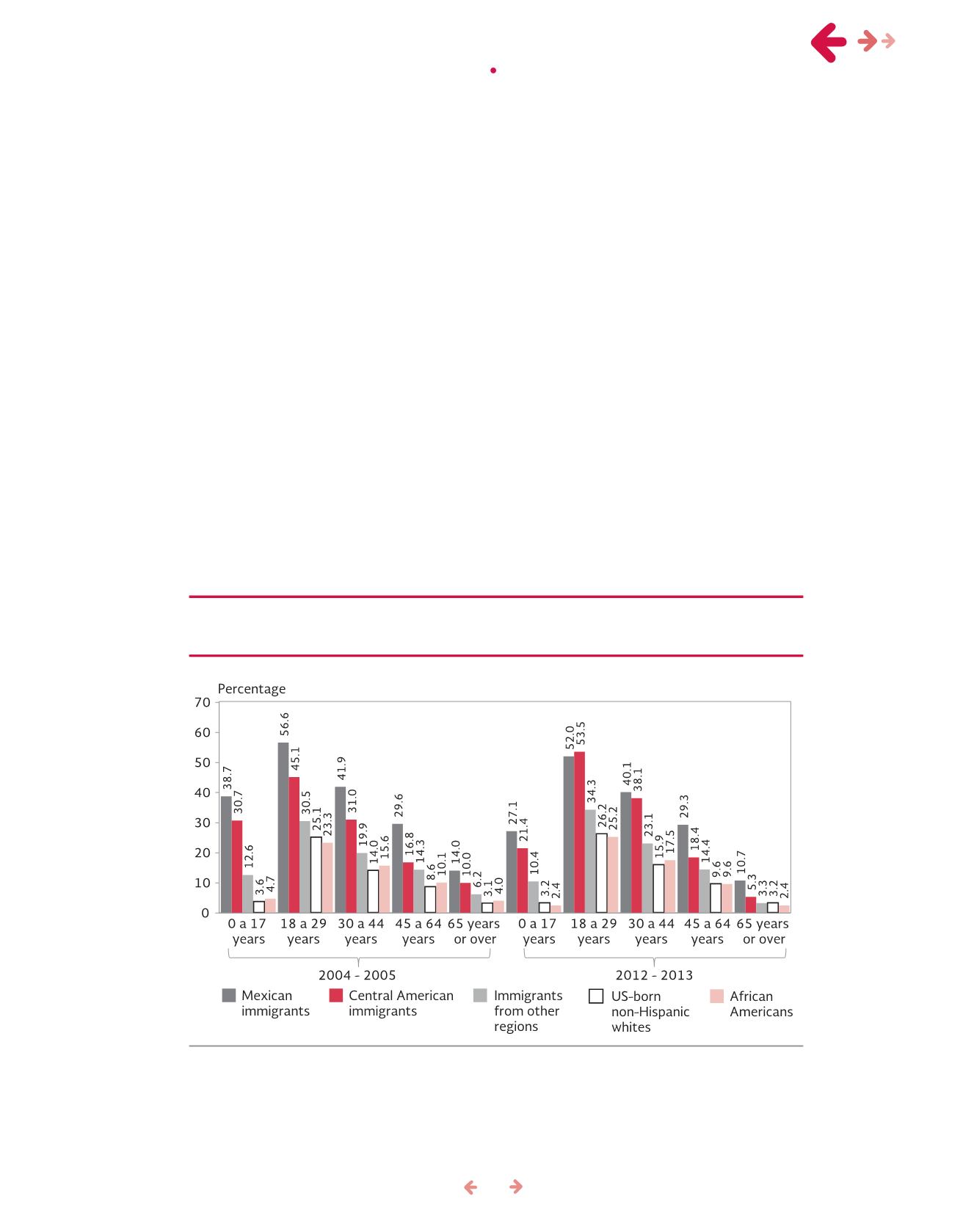
37
This disadvantage amongMexican immigrants
is reproducedacrossall agegroups, though it ishigher
among those ages 18 to 29, followed by those ages
30 to 44 (Figure 22). The implications of not having
a regular sourceof carehavedifferent levelsof severity
based on the stage of the life-cycle. Childhood and
adolescence require continuous and comprehensive
medical supervision to encourage healthy physical
and intellectual development. Though therehas been
a significant drop in the proportion of Mexican chil-
dren and adolescents without a usual source of care,
the figure for 2012-2013 remains alarming (27%)
in comparison with that of immigrant children from
other regions (10%), non-Hispanic US-born whites
(3%) andAfricanAmericans (2%).
During the later stages of life, health can dete-
riorate rapidly and chronic illnesses aremore likely to
develop. Asa result, problemsassociatedwith the lack
of continuous health care multiply. Despite the de-
creasing disparity betweenMexican adults and those
in other groups, the percentage of people without a
usual source of health care among the oldest group
remains relatively high (11%, compared with 3% for
immigrants from other regions and non-Hispanic US-
bornwhites, and2%ofAfricanAmericans).
It is generally more common for men than
women to lack a usual source of care. However,
differences between genders are more pronounced
among Mexican immigrants (almost 20 percentage
points in2012-2013), followedbyCentralAmericans.
Attheotherextremearenon-HispanicUS-bornwhites,
whosegender gap is under fivepercentagepoints.
The number of bothMexicanmen and women
without a usual source of health care has decreased
during the last decade, although this drop has been
more significant amongwomen. This was reflected in
acorrespondingdecrease in thedisadvantage
vis-à-vis
women fromother populationgroups (Figure23).
Source: Migration Policy Bureau, SEGOB, based on U.S. State Health Access Data Assistance Center,
National
Health Interview Survey
(NHIS), 2004-2005 and 2012-2013. Integrated Health Interview Series. Minneapolis:
UniversityofMinnesota.
Figure22. PopulationofUnitedStateswithout ausual sourceof care, by region
of originandethnicityor race, basedonagegroup, 2004-2005and2012-2013
chapter i i •
access to health insurance and service use


